 |

Introduction
to Sociology SOC101
VU
Lesson
39
IMPLICAIONS
OF POPULATION GOWTH
Population
is a big reservoir of human resource
for the economic development of a
country. In fact it is
the
quality of the human resource
that makes a difference for the
economy. Poor quality of this
resource
could
be a burden whereas high
quality can be an asset.
From another angle one has
to see how much
income
is to be distributed among how
many people. Same amount of income
distributed among a
large
number
of people brings smaller per
head share compared with if
there is a smaller number of people
who
have
to share the said income. One
has to see at what rate
income is increasing and at what
rate population
is
increasing. Look at the information
provided in table 1. Gross domestic
product (GDP) of Pakistan
has
increased
from Rs. 20 billion in 1950
to Rs. 4018 billion in 2003
which is a 200 percent
increase. But when
we
look at the per capita
income it increased from $ 79 in
1950 to $ 492 in 2005 which
is only 6 percent
increase
during this period. Though
there is a 200 percent
increase in the GDP but when
we try to
distribute
it as per head it gives only
6 percent increase because
there is so much of increase in
population.
Table
1: GDP and per Capita income
of Pakistan, 1950-2003
1950
2003
Increase
.
GDP
20*
4018*
200
Per
capita income
79^
492^
6
.
*
In billion Rs. ^ In US $
South
Korea and Pakistan are
often capered with respect
to population change and per
capita income
change.
One reason for this comparison is
that the two countries were
similar in population size
and in per
capita
income in 1951. Table 2
shows that in 1951 the
population of Pakistan was 33
million and that of
South
Korea was 20 million.
In
Table
2: Comparison of Pakistan with South
Korea
1951
2004
___________________
________________________
Pakistan
S.
Korea
Pakistan
S.
Korea
Population
33
million
20
million
151
million
47.7
million
GDP
$
79
$
82
$
503
$10,
700
2004
the population of Pakistan increased to
151 million and that of
South Korea it went up only to
47.7
million.
Compared with Pakistan this is very
small increase. With respect
to gross domestic product
(GDP)
in
1951 Pakistan had $79
and South Korea had $
82. In 2004 the GDP of
Pakistan increased to $ 503
and
that
of South Korea to $ 10,700. The
big increase in population of
Pakistan gave a smaller per
capita GDP
whereas
a smaller increase in population of
South Korea gave a bigger
per head increase in
GDP.
Another
implication of population growth
may be seen with respect to
the status of employment and
unemployment.
In 1970-71 there were 18.5
million employed people in Pakistan
which increased to
39.4
million
which is about two times
increase (see fig. 1). It is
interesting to note in 1970-71 there
were 0.4
million
unemployed people which increased to 3.3
million showing 8 times increase in
unemployment.
Such
an ironical increase in unemployment has
emerged due a rapid increase
in population
99
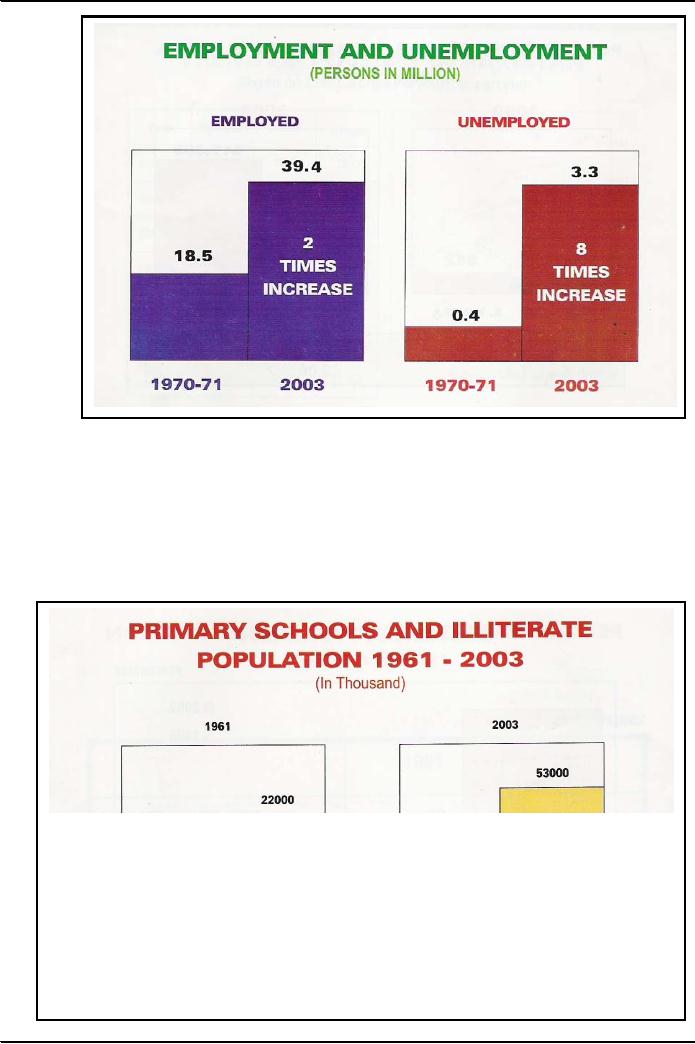
Introduction
to Sociology SOC101
VU
100
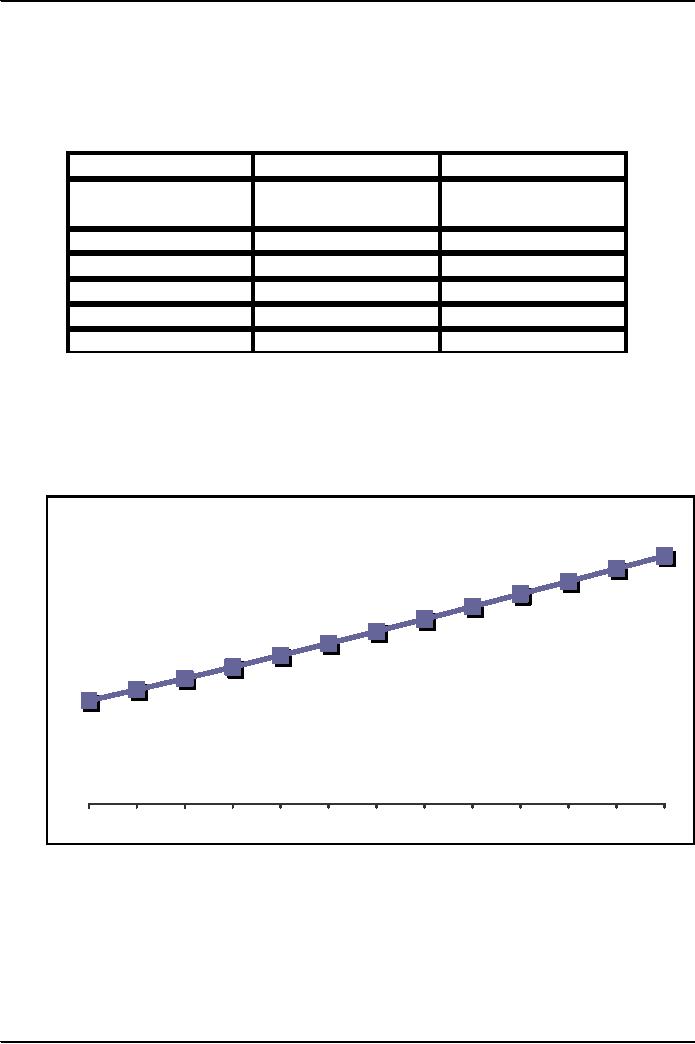
Introduction
to Sociology SOC101
VU
An
increase in population has a
negative impact on the size of
farms. Due to the law of inheritance, on
the
death
of the owner the landholding is divided
among the heirs as provided in the
law of inheritance. The
information
provided in table 3 shows that the number
of farms under 3 acres has
increased between
1980
and
1990. The small size
farms become smaller and
smaller and ultimately
become uneconomic for
purposes
of cultivation. It affects the employment of the
owners, agricultural production, and
economy of
the
country.
Table3:
Number of private farms by
size
Farm
size
1980
1990
(acres)
Number
%
Number
%
(million)
(million)
Under
3 Acres
2.07
50.90
3.25
64.10
3-5
0.92
22.60
0.86
17.00
5-10
0.71
17.40
0.62
12.20
10+
0.37
9.15
0.34
6.80
Total
4.07
100.0
5.07
100.0
The
population projections show that the
population of Pakistan is likely to
increase rapidly and is
expected
to
reach the figure of 170.1
million by the year 2010, the
year when the government of Pakistan
expects
some
stabilization in population growth (see
figure 3).
Figure
3: Population Projection, 1998-2010 (in
millions)
170.1
166.5
163.0
159.4
155.8
152.3
148.8
145.4
142.0
138.7
135.5
132.3
129.2
1998
1999
2000
2001
2002
2003
2004
2005
2006
2007
2008
2009
2010
Pakistan
has young population, 43 percent being
under 15 years of age. Among
these children 5-14
year
olds
are supposed to be in school, therefore
they need school facilities. In 1998 the
number children aged
5-14
years was 31.7 million. It
has been projected that by the
year 2010 their number is
likely to increase to
40.3
million (see fig.
4).
Of
these children there were
11.9 million who were
supposed to be in primary school. This
number is likely
to
increase to 20.3 million by the
year 2010 (see fig.5). They
will certainly be in need of primary
school
facilities
if we want them to be in school. One of the facilities is the
availability of teachers. In 1998
there
101
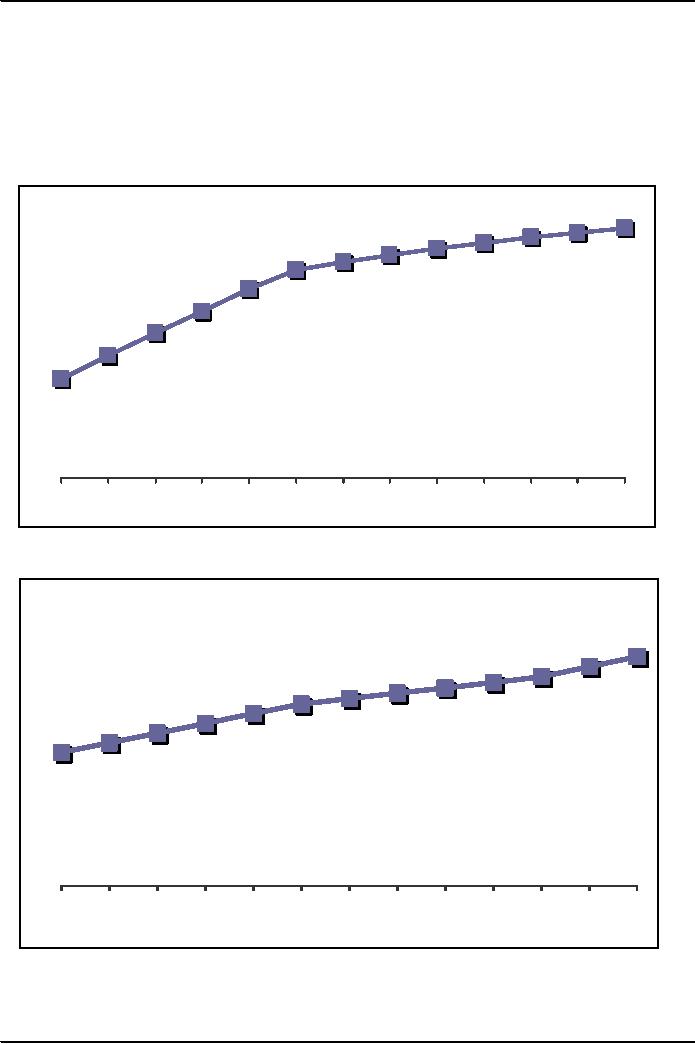
Introduction
to Sociology SOC101
VU
were
11.9 million primary school teachers. In
order to meet the requirements in
2010 the country shall
be
in
need of 20.3 million primary
teachers (see fig.
6).
Another
important requirement is the availability of
schools. In 1998 the required number of
schools was
79
thousand. To cater to the needs of the
projected increase of school going children, the
country shall
need
162.6 thousand additional
schools (see fig. 7).
For the creation of primary school
facilities the
expenditure
needed in 2010 shall be Rs.
68 billion (see fig.
8).
Figure
4: Population aged 5-14 years,
1998-2010 (in
millions)
40.0
40.2
40.3
39.8
39.6
39.3
39.1
38.8
38.1
37.2
36.4
35.6
34.7
1998
1999
2000
2001
2002
2003
2004
2005
2006
2007
2008
2009
2010
Figure
5: Primary school students,
1998-2010(in millions)
20.3
19.4
18.5
18.0
17.5
17.1
16.6
16.1
15.3
14.4
13.5
12.7
11.9
1998
1999
2000
2001
2002
2003
2004
2005
2006
2007
2008
2009
2010
102
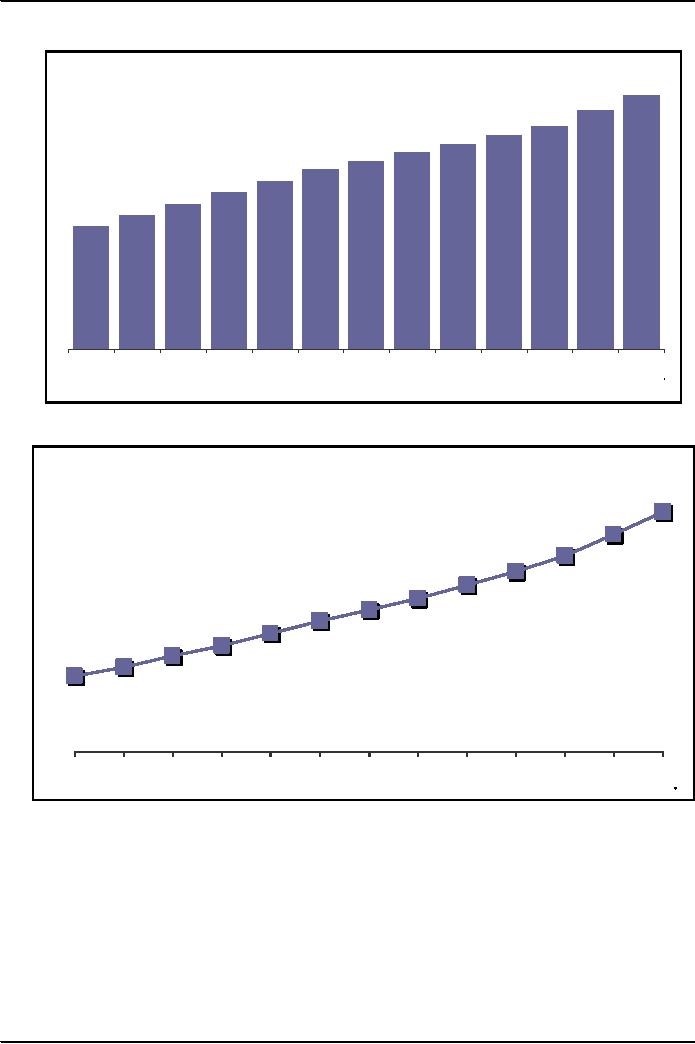
Introduction
to Sociology SOC101
VU
Figure
6: Primary Teachers Required,
1998-2010 (in 000)
162.6
152.8
143.3
137.2
131.6
126.1
120.7
115.3
107.7
100.1
92.8
85.7
79.0
1998
1999
2000
2001
2002
2003
2004
2005
2006
2007
2008
2009
2010
Figure
7: Primary Schools Required
1998-2010 (in 000)
68.0
61.7
55.8
51.3
47.3
43.6
40.3
37.3
33.7
30.2
27.1
24.1
21.3
1998
1999
2000
2001
2002
2003
2004
2005
2006
2007
2008
2009
2010
Health
is another social sector which
has to feel the impact of the growth of
population.
In
1998 there was a need
for 20.2 thousand doctors'
production and management.
With the increase in
population
this need is likely to increase to
45.4 thousand by the year
2010 (see fig. 9).
The annual recurrent
expenditure
required for this facility was
3.7 billion in 1998 which is
likely to increase to 13.5
billion by the
year
2010 (see fig. 10).
Then one looks into the
question: will Pakistan be
able to allocate that amount
of
resources
in this sector.
103
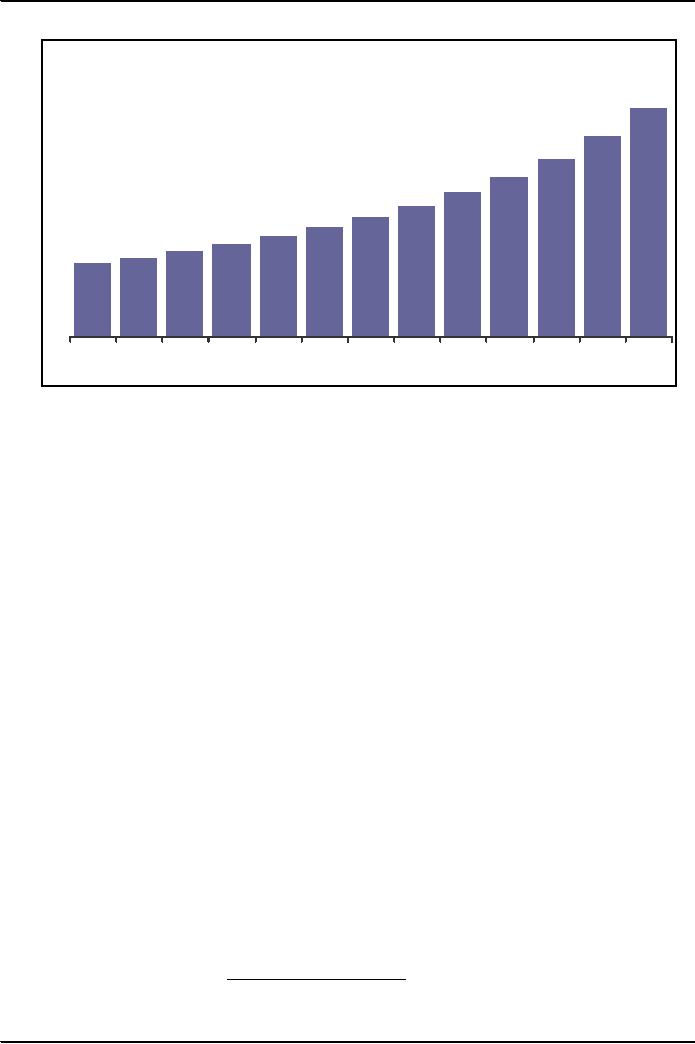
Introduction
to Sociology SOC101
VU
Figure
8: Doctors production and management, 1998-2010
(in 000)
250.2
220.1
195.6
175.2
157.9
143.3
130.6
119.5
109.8
101.2
93.6
86.8
80.7
1998
1999
2000
2001
2002
2003
2004
2005
2006
2007
2008
2009
2010
Additional
GDP needed per
year
We
have already seen in a previous
lecture that in Pakistan 3
million people are being added
every year.
Presently
GDP/per capita in the country is US $
652. To provide the same amount
per capita GDP for
this
annual
increase in population is (652 x 3 =)
$1.956 In order to create
additional GDP of $1.956
billion to
maintain
the current per capita GDP,
Pakistan needs an additional investment
$5.868 billion annually.
Will
we
be able to make such annual
investment?
Hard
Facts
Given
the rate of increase in population
growth, economic development, and
social sector development, the
hard
facts are:
Population
�
Population
living below poverty line
49
million
�
Population
with NO access to safe
drinking water
54
million
�
Population
with one room
houses
56
million
�
Population
with no sanitation
76
million
�
Infant
Mortality Rate (per 1000
live births)
80
�
Maternal
Mortality Rate (per 100,000
live births)
350-500
�
Deliveries
at home (%)
76
�
Infant
Mortality Rate (per 1000
live births)
80
�
Maternal
Mortality Rate (per 100,000
live births)
350-500
�
Deliveries
at home (%)
76
Environment
�
Forest
Cover
�
At
less than 5% of the total surface
area is being reduced by
2.5% - 3.1% per year
,
which
is the 2nd highest
deforestation rate in the world.
�
Land
Degradation
�
38%
of the irrigated land is water
logged and 14% is
saline.
104

Introduction
to Sociology SOC101
VU
�
Air
Pollution
�
Suspended
particle matters in air in most urban
centers are 6.4 times higher
than
WHO
guidelines.
�
Traffic
Increase
�
0.8million
to 4.0 million over last 20
years 500 %
increase.
Summary
of Implications
Shortage
Educational
facilities
�
Living
Space
�
�
Health
Services
Arable
Land
�
�
Housing
Units
Clean
water
�
Food
Increase
�
�
Unemployment
Over
crowding
�
�
Land
fragmentation
Katchi
abadis
�
�
Import
of food
Poverty
�
�
Environmental
problems
Unrest
�
�
Congestion
in households
Crime
Conclusions
�
Issues
related to population need to be
advocated for from the
top level of the
government;
�
The
public sector allocations for
social sectors remain very low
and need to be enhanced;
�
Population
needs to be taken up as a core basis for
any future development
planning;
�
Issues
related to gender and adolescents need to be
addressed; and
�
Fighting
poverty, illiteracy, ill
health and meeting unmet
needs are the major
challenges.
105
Table of Contents:
- THE ORIGINS OF SOCIOLOGY:Auguste Comte, The Fields of Sociology
- THE SOCIOLOGICAL PERSPECTIVE:Society affects what we do
- THEORETICAL PARADIGMS:Salient Paradigms, Critical Evaluation
- SOCIOLOGY AS SCIENCE:Empirical, Verifiable, Cumulative, Self-Correcting
- STEPS IN SOCIOLOGICAL INVESTIGATION:Exploration/Consultation
- SOCIAL INTERACTION:Social Status, ROLE, The Social Construction of Reality
- SOCIAL GROUPS:Primary and Secondary Groups, Reference Group, Networks
- ORGANIZATIONS:Utilitarian Organizations, Coercive Organizations
- CULTURE:Universality, Components of Culture, Symbols, Language
- CULTURE (continued):Beliefs, Norms, Cultural Diversity
- CULTURE (continued):Culture by social class, Multiculturalism, Cultural Lag
- SOCIALIZATION: HUMAN DEVELOPMENT, NATURE, Social Isolation
- UNDERSTANDING THE SOCIALIZATION PROCESS
- AGENTS OF SOCIALIZATION:The Family, The School, Peer Groups, The Mass Media
- SOCIALIZATION AND THE LIFE COURSE:CHILDHOOD, ADOLESCENCE
- SOCIAL CONTROL AND DEVIANCE:Crime, Deviants, Stigma, Labeling
- THE SOCIAL FOUNDATIONS OF DEVIANCE:Cultural relativity of deviance
- EXPLANATIONS OF CRIME:Sociological explanations
- EXPLANATIONS OF CRIME -- CONTINUED:White-Collar Crime, Conflict Theory
- SOCIAL DISTRIBUTION OF CRIME: EXPLANATIONS, Gender and Crime
- SOCIAL STRATIFICATION: INTRODUCTION AND SIGNIFICANCE
- THEORIES OF CLASS AND STRATIFICATION – I:Critical evaluation
- THEORIES OF SOCIAL CLASS AND STRATIFICATION – II
- THEORIES OF CLASS AND SOCIAL STRATIFICATION – III
- SOCIAL CLASS AS SUBCULTURE
- SOCIAL MOBILITY:Structural factors, Individual factors, Costs
- THE FAMILY: GLOBAL VARIETY, Marriage Patterns, Patterns of Descent
- FUNCTIONS OF FAMILY:Reproduction, Social placement
- FAMILY AND MARRIAGE IN TRANSITION:Family is losing functions
- GENDER: A SOCIAL CONSTRUCTION, Gender socialization
- GENDER SOCIALIZATION:Role of family, Gender Stratification
- EXPLANATIONS OF GENDER INEQUALITY:Conflict Explanations, Feminism
- FUNCTIONS OF SCHOOLING:Cultural Innovation, School Tracking
- ISSUES IN EDUCATION:Low Enrollment, High Dropout, Gender Disparity
- POPULATION STUDY AND ITS SIGNIFICANCE:Crude Birth Rate
- THEORY OF POPULATION GROWTH:Theory of Demographic Transition
- POPULATION PROFILE OF PAKISTAN:World Population Growth
- POPULATION PROFILE OF PAKISTAN (Continued):Age Distribution, Sex Composition
- IMPLICAIONS OF POPULATION GOWTH:Additional GDP needed per year
- POPULATION POLICY:Goals of Population Policy, Objectives, Strategies
- ENVIRONMENT AND SOCIETY:Global Dimension, Historical Dimension
- ENVIRONMENTAL ISSUES:Preserving Clean Water, Clearing the Air
- SOCIAL CHANGE:Social change is controversial.
- CAUSES OF SOCIAL CHANGE:Culture and Change, Conflict and Change, Modernization
- MODERNITY AND POST MODERNITY:Cultural Patterns, Post-modernity